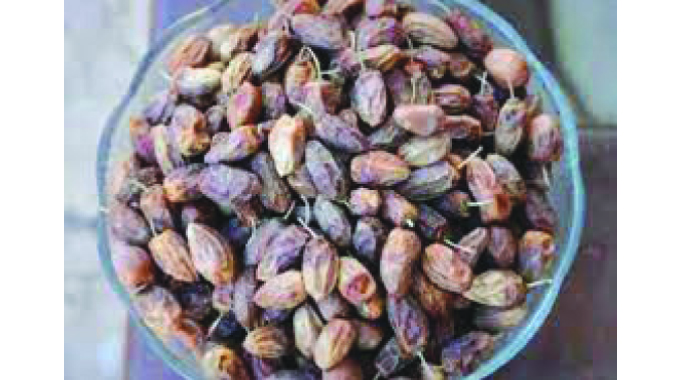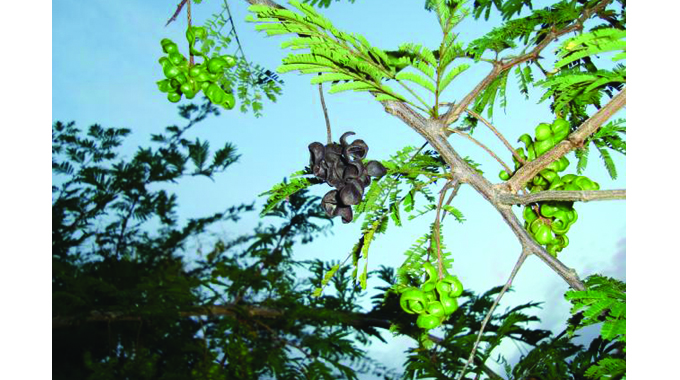Are local indigenous trees’ existence and importance considered during land clearing?

Mahlabezulu Zulu, Chronicle Correspondent
NATURAL resource conservation is encouraged in places which have become human habitats as compared to wildlife protected areas such as national parks and forestry areas.
Unwarranted cutting down of trees, burning of the veld and soil erosion have resulted in disappearance of species of wildlife especially small game like duikers, hares and birds; plant and insects which used to be found in the bush.
Habitats of such wildlife in human habitats are also considered to be ecosystems beneficial to human beings.
Insects like bees pollinate flowers of trees like bird’s plum/umnyi/munyii and velvet wild meddler/umviyo/munzviro to produce fruits which birds and humans feed on. These also pollinate cultivated garden and field crops like tomatoes and sunflower.
Duikers and hares found in such habitats deposit dung in the soil which improves soil fertility, promoting growth of grass and trees which browsers feed on. Indigenous trees, grass, soil, wild animals especially small game like duikers are considered a biotic part of the environment and considered to be natural resources because human beings can benefit from them.
They are sometimes perceived by both new and old dwellers of human settlements to be in abundance. It’s unfortunate that soil erosion, and disappearance of some species which used to be sighted in bushy areas of human habitats has exposed lack of care for such natural resources.
Human habitats, mainly marked by building structures as homes are places where families congregate. Here, high standards of hygiene are maintained through practices ranging from sweeping to picking of litter and dumping it in designated places.
Removal of congested bushy areas in and around homesteads removes potential habitats of snakes or predators of domestic animals. These hygienic practices are commended for safety and maintenance.
Indigenous trees have several uses ranging from use of timber to build homes, kraals, fences to harvesting their fruits.
The big questions related to agroforestry are; are indigenous trees’ existence and importance considered during land clearing of places which have been designated to be human habitats? Are individual home dwellers supporting the existence of indigenous trees in their homes for their benefit, livestock and the environment in general? If not why?

Velvet wild meddler/umviyo/munzviro
Agroforestry is the growing of trees, crops, and keeping of animals for the benefit of the environment and human beings.
Agroforestry natural resources conservation concept is used to promote human habitats by different environmentalists, especially homesteads in rural communities.
Due to discovery, and promotion of other natural resources conservation models like permaculture — permanent agriculture in gardens to promote conservation of natural resources — agroforestry as a conservation model which is likely to be rated as an effective method of promoting concepts on natural resources from “homestead level” has lost popularity due to lack of promotion.
Natural resource conservation concepts in communities, can be effective if their promotion begins from homestead level. If families realise the importance of domestic trees for the benefit of livestock, buildings and crops through agroforestry practices, it will encourage cross pollination of ideas on the conservation model, and promote conservation of trees and other natural resources.
Keeping some trees under agroforestry at homesteads is beneficial. They act as wind breaks, prevent soil erosion, some trees
have edible fruits, provide shade for domestic animals like pigs which do not sweat to cool themselves, protect small livestock like chickens from being spotted by flying raptors like eagles and hawks, provide shade and roosting places for chickens.
Trees like monkey bread/ihabahaba/musekesa and sickle pod/ugagu/mupangara have many benefits ranging from improving soil fertility by fixing nitrogen to harvesting and feeding livestock with calcium and protein rich pods.

ugagu/mupangara
In a well-designed agroforestry model at homestead level, even when exotic trees are incorporated as orchard trees they can benefit from manure and high urine nitrogen content deposited by the domesticated animals.
But due to lack of promotion of such effective nature conservation models, even some learning institutions like schools have adopted tree cutting as part of “high standard cleanliness.”
This has resulted in some buildings’ roofs being blown off by wind due to lack of windbreaks. It is good that, some schools conserve such trees to support the curriculum being offered and protection of the school.
Aesthetic value is promoted through growth and trimming of trees. For those who love nature, during a school visit, it’s good to follow a road leading to the school and eventually bumping into some school structures because trees cover the structures and have created a conducive nature learning and protection environment.
Unfortunately some school structures can be seen about a kilometre or more away due to deforestation.
Mahlabezulu Zulu is a conservationist who has worked for various wildlife research, and conservation organizations in Hwange National Park, and Fuller Forestry in Victoria Falls. He can be contacted on 00263(0)713269827/0776196171. Email [email protected] or [email protected]











Comments